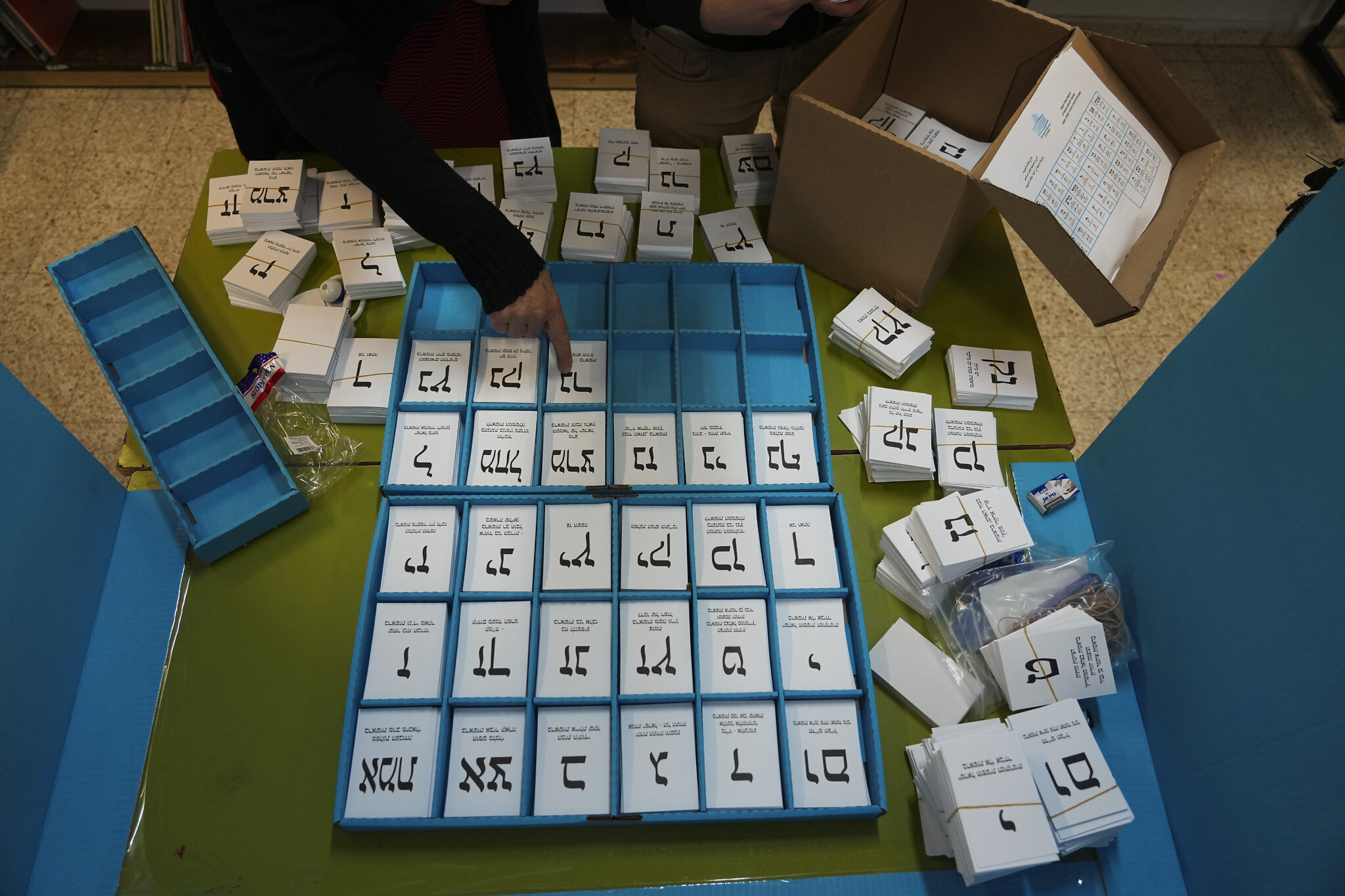
Electoral official arrange ballots in the West Bank settlement of Kiryat Arba during Israeli elections, Tuesday, Nov. 1, 2022. (AP Photo/Tsafrir Abayov)
Prof. Sam Lehman-Wilzig – Israel’s Election Result: Resolution or Illusion?
The result of Israel’s 2022 election seems to indicate a resounding “mandate” to govern for Netanyahu and his future coalition partners. To a certain extent, that’s an optical illusion – or rather, a mathematical one. Paraphrasing what a wag once declared: “there are truths, there are lies, and then there are damned statistics…”. The latter are not necessarily falsehoods, but they can be misleading.
Let’s start with some recent American history. Remember Donald Trump’s “election victory” in 2016? I put that in quotation marks because he actually received three million fewer votes than his opponent, Hillary Clinton. But as is well known, the Electoral College is built on a state level, with the winner-take-all approach in each of the fifty states. Trump eked out a win in three “battleground” states, and that carried him over the threshold to victory.
What happened last week in Israel? As with most everything else in the country, the Israeli election system is “complicated.” This might surprise any U.S. citizen living in America who must slog through numerous election offices (even local “dog catcher” could be on the ballot). However, once they become an Israeli citizen the American expat will be pleasantly surprised: there’s only one decision to make here: for which single political party to cast my ballot? However, the complication arises later – in the subsequent tallying of the national vote.
Each party receives a percentage of the country’s overall vote determining the number of members on the party list that it will send to the Knesset (out of 120). But in order to be considered for Knesset inclusion, a party has to pass the minimal threshold of 3.25% of the overall vote. This is why many smaller Israeli parties will “unite” for the election campaign – to guarantee passing the threshold. This “threshold” issue might seem to be a minor part of the election, but it can actually be super-critical.
In Israel’s elections, when one adds up all the parties from the Right-wing camp that will form the next government, they received in total a bit over 48% of the national vote. Add to that around 1% of the Bayit Yehudi (Jewish Home) party and we arrive at 49%. Then we add up all the parties from the “anti-Bibi” camp who made it into the Knesset: 43%. A clear victory, right? Yes and no. According to the rules of the game, certainly (and thus let there be no doubt: its victory is legitimate). However, the margin is really much, much closer than that because two “anti-Bibi” parties just missed passing the voting threshold: Meretz, garnered 3.19% percent – a mere 0.06% under the threshold! The anti-Zionist, Arab Balad party was also very close to the threshold with 2.9%. Thus, if one adds these two parties’ vote to the anti-Bibi camp, we arrive very close to 49.0% – almost exactly what Netanyahu’s bloc got! (The actual gap was a mere 30,000 votes; the other 2% went to all the “exotic” parties put together, each very far from the threshold and almost all without any ideological position regarding Netanyahu.)
In short, as with Trump’s victory in 2016, this election could easily have ended up in a dead heat – not only in the national vote, but more important in the apportionment of members of Knesset i.e., 60 for Netanyahu’s bloc, and 60 for the current anti-Bibi, ruling “Change Government.” If that happened, Lapid would have continued to be prime minister until… the next election campaign (#6 in the recent series).
What’s the bottom-line message? First, there is no “perfect” voting system. After all, if the voting threshold would have returned to its original 1% (what it was in 1948 during Israel’s first election campaign), it might have resulted in a different political constellation today – by adding a few more parties to the Knesset (several of today’s “joint” parties would certainly run independently). However, that would have made any coalition virtually ungovernable with many parties in the government (this new one will have four – two of which are themselves “joint”).
Second, democracy involves “rules of the game,” and each party must strategize based on those rules. In this election, the Right-wing bloc did far better than the Center-Left. Bibi pushed strongly to have Ben-Gvir and Smotrich merge their respective parties. He also found a way to resolve a serious split within the United Torah Judaism party, a split that would have probably led to one of its sub-parties missing the voting threshold. Conversely, on the Left, Michaeli from Labor refused to merge with Meretz despite Lapid’s pleas – and as noted above, Meretz is no longer in the Knesset. Balad, too, split from the United Arab Party – and we know how that turned out.
Third and finally: yes, the new governing coalition will have 64 seats, but the national vote hardly suggests a strong “mandate” for its leader Netanyahu. The Israeli People have spoken at the ballot box, but the election “system” has produced an outcome significantly removed from that numerical one (wo)man, one vote result.







